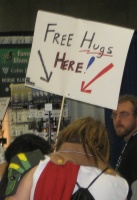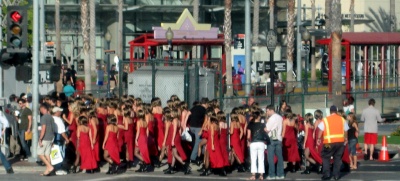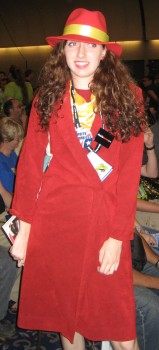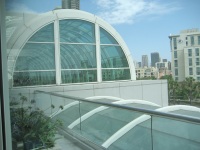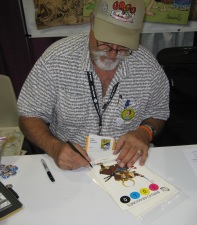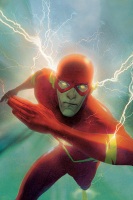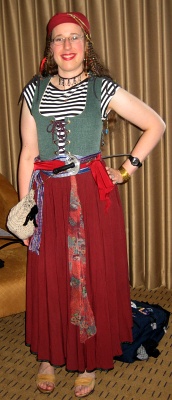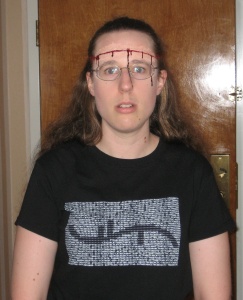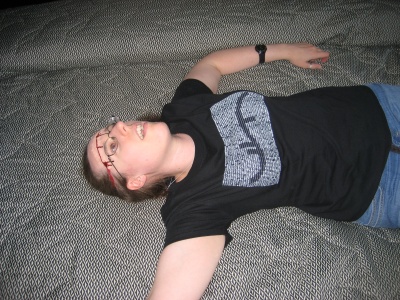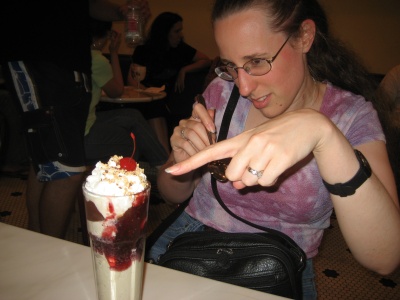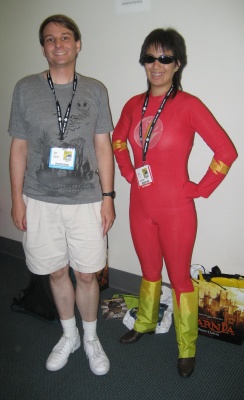I wanted to call this “Oddball Comic-Con,” but decided that might be a little too close.
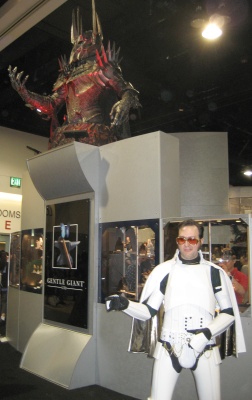 Stormtrooper Elvis has become such a fixture that I almost didn’t bother taking a picture of him when I saw him this year… but then I noticed his pose, and the Sauron statue in the background.
Stormtrooper Elvis has become such a fixture that I almost didn’t bother taking a picture of him when I saw him this year… but then I noticed his pose, and the Sauron statue in the background.
There were a number of people walking around with “Free Hugs” signs, most of them women, but a few men. I never actually saw someone take one of them up on the offer, though.
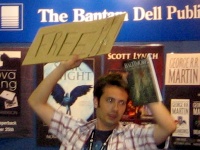 On the subject of “Free” signs, I found it amusing that the Bantam Dell booth was trying to attract people with a hand-lettered cardboard sign proclaiming, “FREE!”
On the subject of “Free” signs, I found it amusing that the Bantam Dell booth was trying to attract people with a hand-lettered cardboard sign proclaiming, “FREE!”

At one point I looked upward at the ceiling of Ballroom 20. With The Dark is Rising being made into a movie, I saw this lighting fixture and cross-beams and immediately thought of the Sign of Fire.
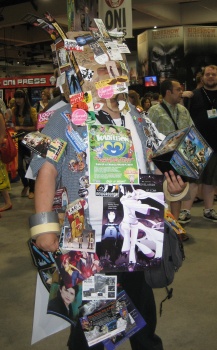 This guy had the ultimate cheap costume: A roll of tape. He just took every freebie flyer that was handed to him, and taped it to himself.
This guy had the ultimate cheap costume: A roll of tape. He just took every freebie flyer that was handed to him, and taped it to himself.

There’s apparently a band called CKY. Some of their merchandise manages to work the name into a rather rude saying…
There was a group of women in identical red dresses, with identical hairdos, and identical shoes. I saw a few of them wandering the floor on Saturday, but didn’t realize just how many there were until we left the convention center for dinner, and saw them crossing the street.
Edit:  Mystery solved? The Resident Evil panel featured 17 Milla Jovovich doubles wearing her iconic red dress. This looks like more than 17, and the dresses don’t seem to be ripped in the right place, but this could be them.
Mystery solved? The Resident Evil panel featured 17 Milla Jovovich doubles wearing her iconic red dress. This looks like more than 17, and the dresses don’t seem to be ripped in the right place, but this could be them.
Continued in Strange Sights of San Diego.
